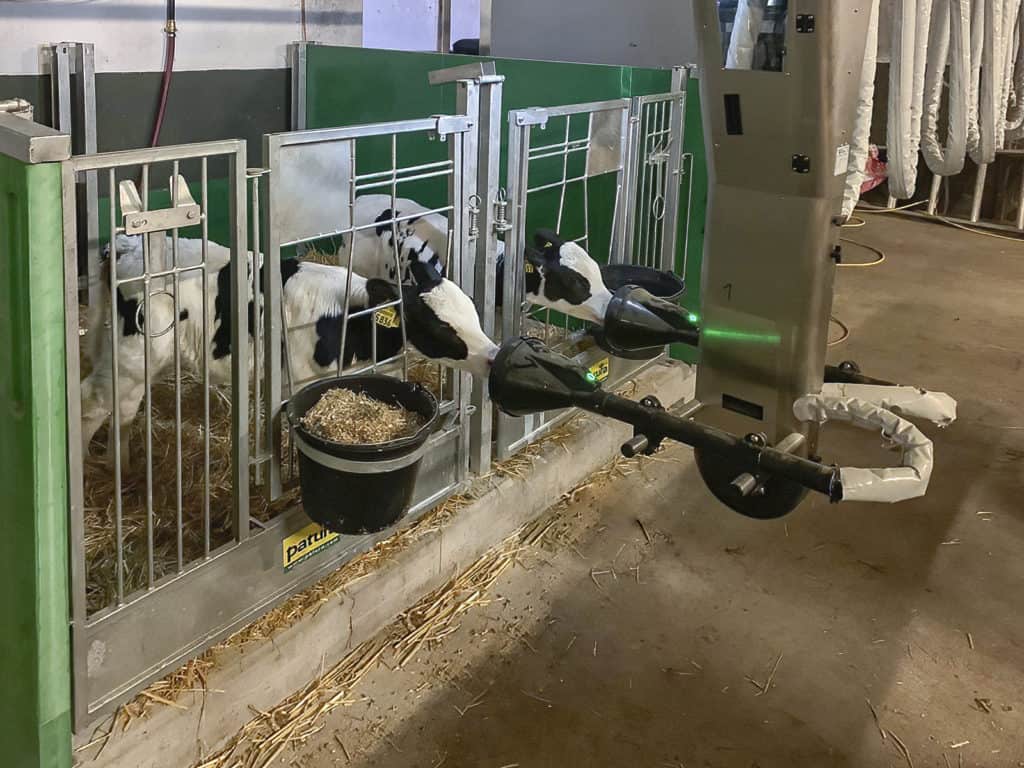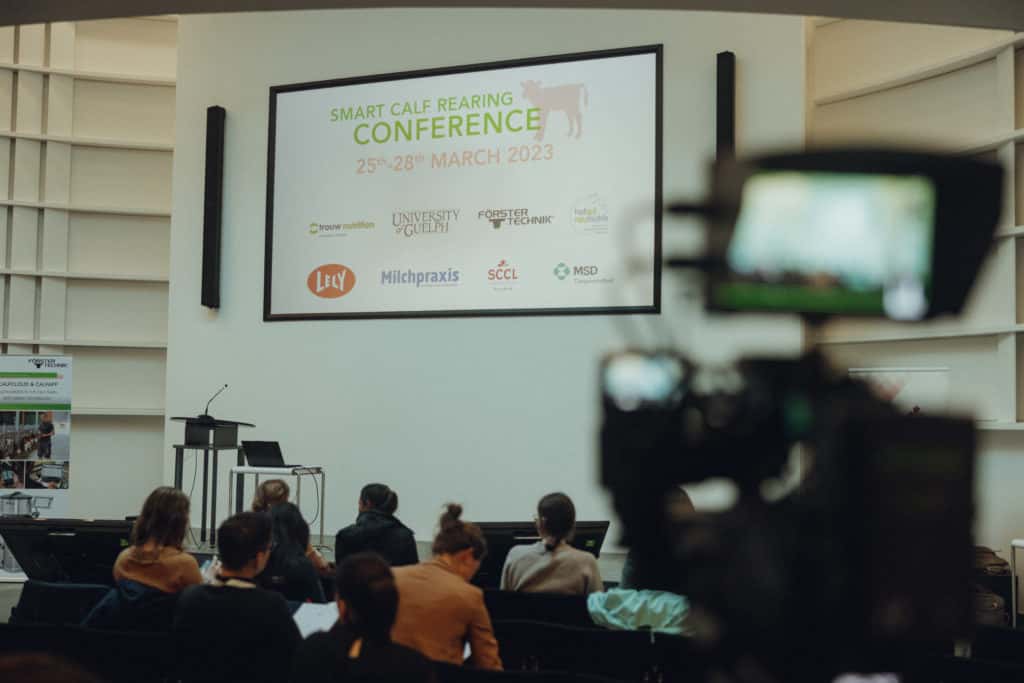Smart Calf Rearing Conference

Scientists, dairy industry personnel and calf growers recently gathered in Germany for 3rd Smart Calf Rearing Conference and the first since 2019. The conference began with the Nuemuhler Calf Practice Day hosted by hofgut neumuhle near Munchweiler. This program was attended by over two hundred people with a program focused on applications of modern technologies and information on progressive calf management practices. Topics included: Acidosis in Calves, Health Calf Rearing, Metabolic Programming and What Science Tells Us About Calf Rearing. During this program, attendees were able to tour the farm and observe many of these practices applied. Attendees had the opportunity to observe the new pair feeding calf rail that is being developed by Foerster Technik.

The Scientific Program began two days later. This conference had several distinguishing characteristics which made it one of the best conferences on calves in many years.
- The breadth of topics was exceptional. Health, Nutrition, Calf Behavior, and issues related to the Sustainability of our calf management systems were especially timely.
- The speakers were globally recognized for their research and their ability to communicate with the audience of those passionate about calves.
- Presentations were focused and concluded within 30 minutes.
- These factors resulted in spirited discussion from members of the audience with excellent moderating provided by the conference organizing members.
The organizers succeeded in creating one of the most stimulating conferences on calves, (since the last one hosted by the University of Guelph in 2019).
The Calfblog.com website will feature summaries of the conference in succeeding posts. We will start these with a summary of the Health section of the conference in this post.
The Health section included discussions on colostrum management and the impact of diarrhea and respiratory disease on not only the preweaned calf but also on later productivity. Establishment of effective preventive and treatment programs for the preweaned calf continues to be a major problem for the dairy industry. Part of the problem is that the calf has not been a priority area for many dairy businesses. The rates of morbidity and mortality vary greatly with timely identification of disease continuing to be problematic. Although not a priority for many dairies, the perception of how dairies manage calves by the general public is significant and increasing. Timely identification of subclinical cases is a major problem.
Speakers and their topics are as follows:
Dr. Sabine Mann – Cornell University – Epidemiology of colostrum production and post-harvest considerations. Naturally, any discussion of calf health must begin with colostrum The focus of her presentation was on the influence of the dry period, and harvest and handling of colostrum on the value of colostrum to the calf. Meeting (but not exceeding) nutrient requirements for energy and protein enhances colostrum quality and yield. Recent research has shown that non-Ig factors in fresh colostrum, especially from the calf’s dam enhance immunity and appear to stimulate intestinal development in the very young calf. Although heat treatment of colostrum reduces bacterial populations the impact on other components of colostrum was not as positive.
Dr. Dave Renaud – University of Guelph – Where do we go with diarrhea in calves? Diarrhea continues to be the primary challenge to calf health. Prolonged diarrhea (>3 days duration) impairs growth and enhances onset of respiratory disease. It also has an influence on later performance. Colostrum intake, the plane of nutrition (milk intake), environment and the use of DFM’s all have an impact on incidence of digestive disease. The level of serum IgG (g/L) in the young preweaned calf is strongly correlated with resistance to disease. The strategic use of electrolyte solutions (orally or intravenously administered) and use of anti-inflammatories improves body weight gain, hydration and fecal score, intake of milk, starter and water and reduces need for electrolyte treatment. Research has questioned the liberal use of antibiotics as only 30% of calves in several studies exhibited bacteremia. Feeding a colostrum replacer to calves exhibiting diarrhea showed more rapid resolution of diarrhea and enhanced weight gain. It was noted that defining what diarrhea is challenging. Colostrum, excellent sanitation, and enhanced nutrition are key tools in the prevention of diarrhea. Determining what treatment strategy to implement continues to be a challenge.
Dr. Bart Pardon – University of Ghent – Improved control of bovine respiratory disease by lung ultrasonography (QTUS) and rapid diagnostics (NBAL). Respiratory disease is a significant problem in calves with an immediate impact on the calf, but more concerning is the influence on the animal later in life. The variation in expression of symptoms and/or detection of subclinical cases of bovine respiratory disease (BRD) is problematic. Increasingly antimicrobial use has declined in many countries without a significant impact on mortality. A step-by step approach to control respiratory disease was featured including timely observation of clinical symptoms, lung ultrasonography, strategic sampling and implementation of control and prevention programs based upon the timely identification of the responsible pathogen(s). Early detection of BRD is the major challenge. The use of lung ultrasonography was demonstrated to increase the accuracy of identification of respiratory disease. Challenges with the implementation of this technology were noted and examples of programs developed to enhance its adoption were noted. The use of laboratory diagnostics was noted to enable more timely and successful identification of likely causative disease pathogens.
Watch for our next post which will include a summary of the nutrition, behavior and consumer issues relating to calf management.




hello, wonder if you know if a smart calf rearing conference is happening again next year as i would be keen to attend.
thanks
Kat
Hi Kat,
Thanks for your message! We’re glad to hear you’re interested in the Smart Calf Rearing Conference. For the most up-to-date information about future events, including whether it’s happening next year, we recommend keeping an eye on the official website: https://smart-calf-rearing.com/.
All the best,
Maria